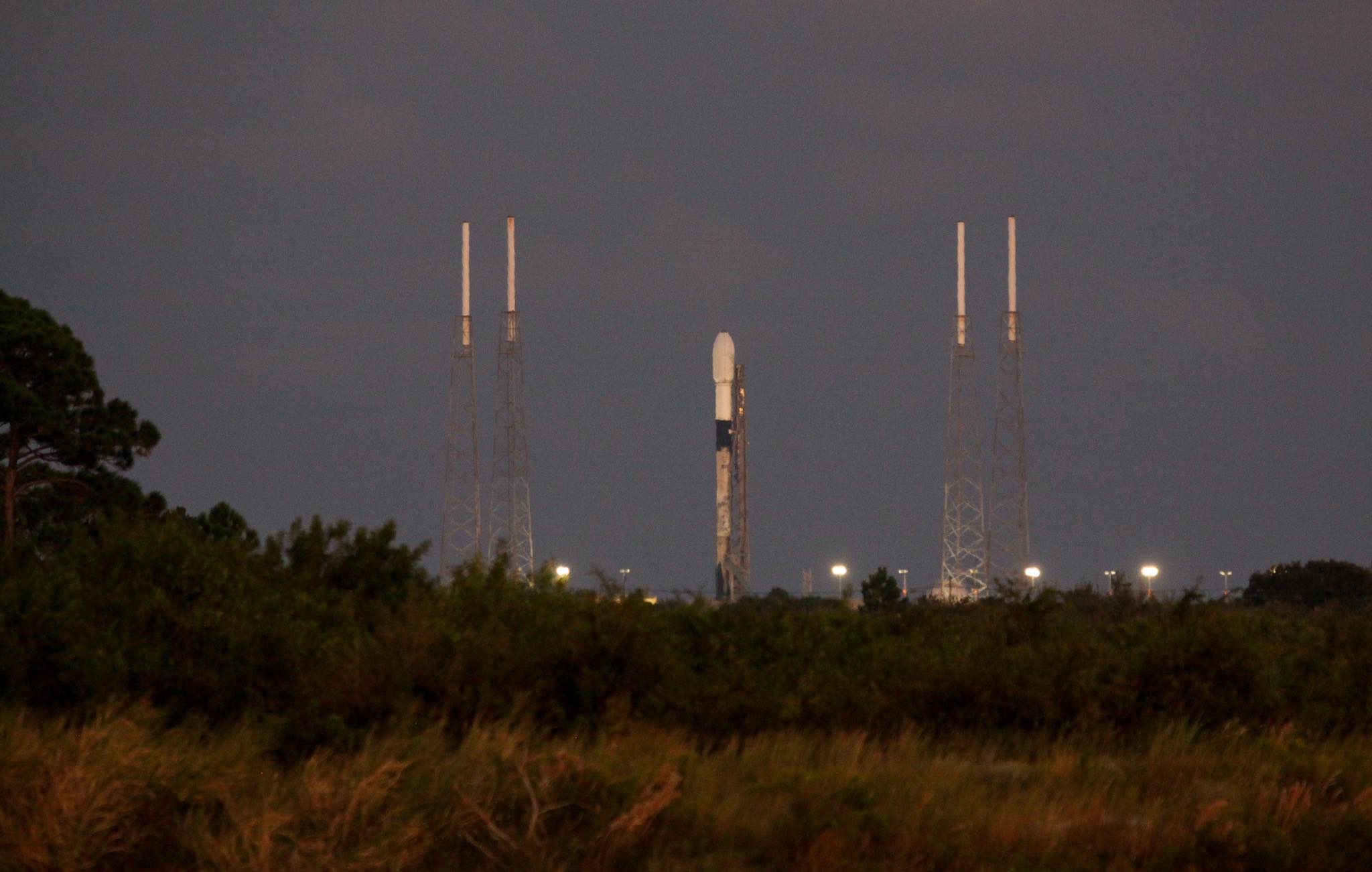SpaceX launches Eutelsat TV broadcasting satellite – Spaceflight Now
Live coverage of the countdown and launch of a SpaceX Falcon 9 rocket from Space Launch Complex 40 at Cape Canaveral Space Force Station, Florida. The Falcon 9 rocket will launch Eutelsat’s Hotbird 13F geostationary communications satellites. Follow us on Twitter.
SFN Live
” alt=””/
A SpaceX Falcon 9 rocket blasted off at 1:22 a.m. EDT (0522 GMT) Saturday with Eutelsat’s Hotbird 13F television broadcasting satellite. The mission marked the 100th launch by SpaceX from pad 40 at Cape Canaveral Space Force Station in Florida.
Built by Airbus, the 9,868-pound (4,476-kilogram) Hotbird 13F spacecraft will beam hundreds of television and radio channels across Europe, the Middle East, and North Africa. Hotbird 13F is the first satellite to be built on Airbus’s new Eurostar Neo spacecraft design, incorporating upgrades in propulsion, thermal control, and electrical systems.
The 116-minute launch window opened at 11:26 p.m. EDT Friday (0326 GMT Saturday) and ran until 1:22 a.m. (0522 GMT). Forecasters from the U.S. Space Force’s 45th Weather Squadron predicted a 90% probability of favorable weather for liftoff, with only a slight chance of cumulus clouds that might create a threat of lightning.
A frontal boundary moved through Central Florida earlier Friday.
“Drier, cooler air along with higher winds filtering in from the north in the wake of the front should tamper any significant shower coverage this weekend and result in favorable launch conditions for both the primary and backup launch opportunities,” the weather team wrote in the official launch weather forecast.
SpaceX delayed the launch time to the end of the launch window to allow additional time for data review. The company did not elaborate on the reason for the data review.
The launch early Saturday was the fourth flight of a Falcon 9 rocket this month, following three Falcon 9 launches in as many days last week.
In preparation for Saturday’s launch, SpaceX ground crews rolled the Falcon 9 rocket and its commercial satellite payload to pad 40, then raised it vertical over the flame trench earlier in the day Friday. During Saturday’s countdown, the 229-foot-tall (70-meter) launcher was filled with a million pounds of kerosene and liquid oxygen propellants in the final 35 minutes before liftoff.
After teams verified technical and weather parameters were all “green” for launch, the nine Merlin 1D main engines on the first stage booster flashed to life with the help of an ignition fluid called triethylaluminum/triethylborane, or TEA-TEB. Once the engines ramped up to full throttle, hydraulic clamps opened to release the Falcon 9 for its climb into space.
The nine main engines produced 1.7 million pounds of thrust for about two-and-a-half minutes, propelling the Falcon 9 and Eutelsat’s Hotbird 13F communications satellite into the upper atmosphere. Then the booster stage — tail number B1069 in SpaceX’s fleet — shut down and separated from the Falcon 9’s upper stage.

Read More: SpaceX launches Eutelsat TV broadcasting satellite – Spaceflight Now
